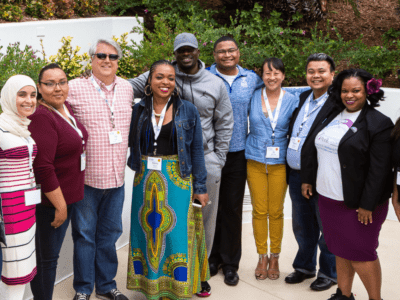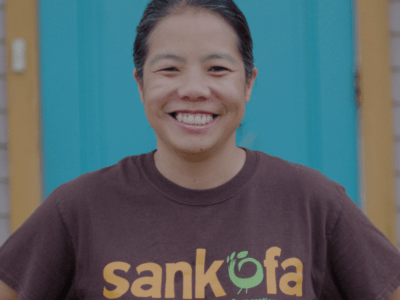As the country marks Labor Day this month, low-wage workers throughout the country are making lives better for themselves and their children by organizing, both through traditional unions and through worker centers.
In the United States, 44% of workers between ages 18-64 are earning low wages: a median hourly wage of $10.22 for those working full-time, or about $24,000 a year, according to the Brookings Institution. Workers in these jobs are more likely to work in unsafe conditions, navigate unpredictable work schedules and face chronic financial insecurity and precarity. Black and Latino workers are disproportionately represented in this group.
The “Great Resignation” disrupted the labor market in a historic way. In its wake, and in the aftermath of the pandemic, the labor movement has experienced a number of organizing wins, with polls showing strong popularity amongst the American public.
For children to thrive, their parents need access to living wages, safe working conditions and predictable schedules. Three W.K. Kellogg Foundation grantees organizing around these issues are the National Council for Occupational Health and Safety (National COSH), Jobs With Justice, and National Black Worker Centers.
Recently, three leaders from these organizations came together to speak with members of the media about the policy changes and issues that are most important to their members and the workers they support.
National COSH is a federation of 26 grassroots worker groups that builds the power of workers and their organizations to demand jobs that are safe, healthy and free from exploitation and abuse. Jessica Martinez, the organization’s co-executive director, discussed the need for heat standards – both indoors and out – during the recent crushing heat wave that affected much of the United States.
“This Labor Day, we think it’s essential to focus on what’s needed to make all jobs safe and secure,“ Martinez said. “Every worker, every day has a right to come home safely at the end of his or her shift.”
“According to the Bureau of Labor Statistics, Latino workers are dying at a rate 25% higher than the rate for all workers,” she continued. “The death rate for Black workers from sudden workplace trauma is 11% higher. Why? Because for far too long, Black and Brown workers have been assigned to the dirtiest and most dangerous jobs.”
Tanya Wallace-Gobern, executive director of the National Black Worker Center, a network of 12 Black Worker Centers across the country that work to end anti-Black racism and discrimination in the workplace, echoed these themes.
“Black workers are the canaries in the economic coal mines of our country,” said Wallace-Gobern. “In 2020, 2,100 cities across the country participated in the strike for Black Lives. It was a reckoning for corporations that have long ignored the concerns of the Black workforce and that have denied them better working conditions, living wages and healthcare.”
She went on to explain how worker centers are working across intersectional issues to make lives better for families and children.
“Successful worker organizations are building on a deepening public demand for a more universal social safety net and fighting for both worker issues and larger community concerns,” Wallace-Gobern said. “We have seen success with unions working with community groups to help shape their demands at the negotiation table. This process has won solutions not just for workers on the job issues, but also for policies that patch the holes and our social safety net.”
She highlighted how teachers in St. Paul, Minnesota, successfully pushed to stop any housing foreclosures for families with school-aged children and how Oregon University workers demanded a tuition freeze as examples of how worker organizing often moves beyond traditional workplace issues.
Denise Diaz, deputy director for institutional advancement at Jobs With Justice, a national nonprofit leading strategic campaigns and shaping the public discourse to build power for working people, raised how the Great Resignation was really “an awakening” for workers and employers.
“Working families in low-wage industries really saw that there was a demand for their labor,” she said. “It was high, and they could leverage that to begin to bargain over better wages and benefits with the protections to directly confront those actors behind the inequality.”
“This is an exciting moment in history where workers are fighting to have a say in the economy, and it’s shared by people who really resonate with that coming out of the pandemic,” Diaz continued.
This Labor Day, she said, “I am just so hopeful. While there’s still a long way to go around health and safety and in so many other ways, we are hopeful because working people are feeling powerful.”
This work reflects the Kellogg Foundation’s belief in the importance of engaging with communities to develop solutions to longstanding problems so that ultimately children and families can thrive. “We see our resources as a medium for communities to help themselves, and that’s exactly what worker power is about – increasing worker agency around pay, benefits and work structures, and cultivating the leadership of workers so they can shape their work, contexts and communities,” said Marcela Montes, program officer at the Kellogg Foundation.









Comments